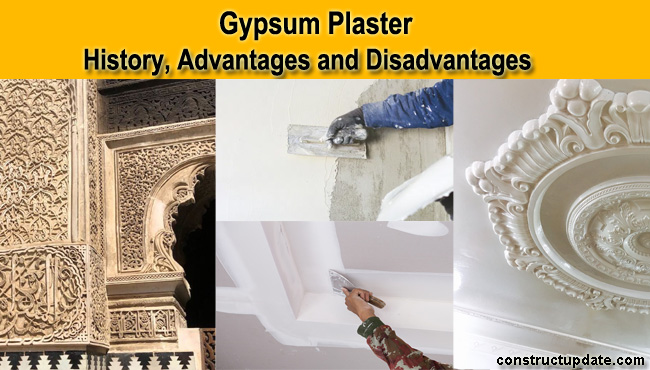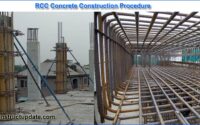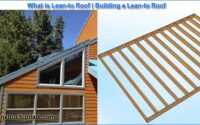Gypsum Plaster History, Uses, Advantages and Disadvantages
What is Gypsum Plaster and its History:
For thousands of years in the entire world, gypsum plaster has been used for interior walls and ceiling finish. For reference, it is shocking to know that 4500 years ago, around 2500 BC, gypsum plaster was used for finishing the wall-interiors of the pyramid of Giza, Egypt.
Also, the gypsum plaster has been used for finishing interior walls of newly made homes in Canada and the United States, applied by hand over wood lath.
This method has been slowly replaced by a less labor-intensive method known as drywall with gypsum texturing. Drywall is made from gypsum. Still, walls built from drywall with gypsum textured are different from walls with gypsum plaster over lath.
For drywall construction, gypsum is the main component of the joint compound used. It is also applied as a skim coat over the wallboard sometimes.
With the gain in mass popularity, gypsum has been replaced slowly by drywall methods.
Gypsum can be directly applied to the earthen walls, straw bales (either directly or over an earthen base coat on straw bale walls, or earthen plaster base coat on interior applications).
Gypsum Plaster:
Gypsum is a water-soluble mineral occurring naturally. Found frequently as well-formed crystals, chemists termed it as hydrous calcium sulfate.
Single crystals with a six feet diameter are generally large unearthed in Naica, Mexico.
Places Found:
Gypsum is widely distributed throughout the surface of Earth, volcanic areas, veins of metallic ores.
Process of making Gypsum Plaster:
The plaster is white cementing material formed by complete or partial dehydration of gypsum. Made by heating gypsum at low temperature, driving off the water, resulting in the formation of Plaster of Paris, used for molds and repairing broken bones.
It can also be mixed with time forming a fast-drying interior finish plaster called gauging plaster.
According to Bob Campbell, a plasterer, lime and gauging plaster are not common any more.
Calcium Sulphate is formed as a resulting product of heating gypsum at high temperatures. Most commonly used as drywall or its compound, also as interior plasters.
The best plaster in the market is the Natural Gypsum.
Manufacturing Companies:
Many large companies such as Red Top, Structolite, Durabond, Sheetrock 90, etc. are the manufacturers of Gypsum Plaster.
Availability:
Available in two forms-
- Wet(in buckets)
- Dry or Powdered form(in bags)
Advantages of using Gypsum Plaster:
a) The reaction of gypsum produces less heat thereby forming fewer or no shrinkage cracks.
b) Drying, durable, light-weight, and excellent high-strength.
c) Offers better acoustics, lessening the echo in the room, and intervention of external sounds.
d) Water usage is less, thereby being the best fit for arid regions.
e) Saves a lot of time for construction.
f) Better protection from natural hazards such as earthquakes.
g) The lighter weight makes the frame long-lasting.
h) Does not require curing which saves both water and time during construction.
i) Gypsum Plaster makes it easier to apply and level.
j) Non-Combustible due to the presence of excess water making it safe and fire-resistant.
k) Saves electricity by maintaining the temperature of the room as it offers heat insulation.
l) Gives a lined, leveled, smooth finish and right-angled corners in the walls.
m) Safe substance prevents health hazards, having a lower impact on the environment.
n) Serves the purpose of decoration.
o) Readily available.
Few Disadvantages of Gypsum Plaster:
a) Cannot be used in areas subject to high humidity, weather, moisture.
b) Cannot be applied in damp areas such as bathrooms.
e) Expensive to traditional cement plaster.





